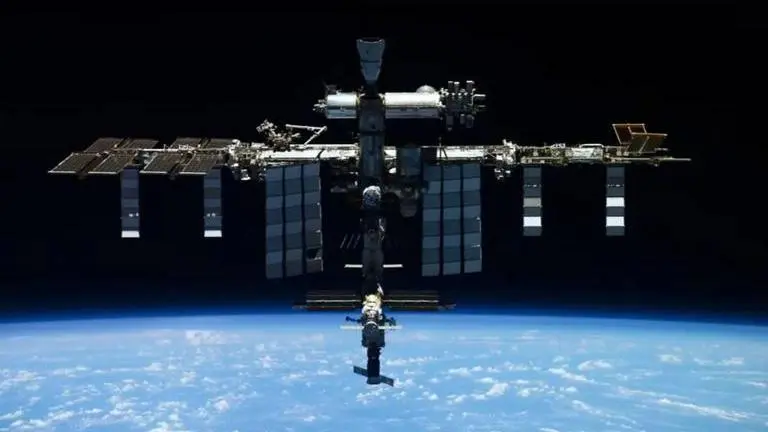Updated 12 March 2023 at 09:13 IST
ISS fired thrusters to dodge collision with Argentine satellite NuSat-17: NASA
According to NASA, the International Space Station was forced to fire thrusters for more than six minutes to dodge a collision with an approaching satellite.
- Science News
- 2 min read

NASA reported that the International Space Station (ISS) had to fire thrusters for more than six minutes on the docked ISS Progress 83 resupply ship to steer clear of an approaching satellite. Recent years have seen an increase in the occurrence of situations where the ISS has had to use its thrusters to prevent collision with satellites and debris.
Taking to Twitter, astronomer and astrophysicist at the Harvard-Smithsonian Center for Astrophysics Jonathan McDowell said that the satellite in question was probably the Argentine earth observation satellite NuSat-17.
Orbital decay: the Satellogic constellation is only one of a number of Earth observing constellations with multiple satellites entering the ISS orbital height regime. Im magenta, Nusat-17 which was the cause of yesterday's ISS dodge manuever pic.twitter.com/OM0mcToe0p
— Jonathan McDowell (@planet4589) March 7, 2023
Notably, Nusat-17 is one of ten commercial observation satellites that launched in 2020 and are operated by geospatial data company Satellogic. As McDowell points out in his tweet, the Nusat constellation is one of several whose orbits are slowly encroaching on the ISS's orbit.
According to a report released by NASA in December last year, the ISS had to fire its thrusters to avoid such collisions 32 times since 1999. In October 2022, ISS had to fire its thrusters for 5 minutes and 5 seconds to dodge the debris from the Russian Cosmos 1408 satellite which was blown apart in 2021 as part of an anti-satellite attack test.
Advertisement
As "constellations" of satellites from firms like SpaceX and OneWeb proliferate quickly, the Low-Earth Orbit, or LEO, has become more crowded in recent years, according to NASA.
LeoLabs, a space technology company, claims that if those two objects had collided, it might have resulted in a "worst-case scenario" in which an uncontrollable collision would start a chain reaction that would eventually lead to other collisions, creating thousands of pieces of space debris that might last for decades and make space exploration more challenging.
Advertisement
Published By : Megha Rawat
Published On: 10 March 2023 at 06:53 IST
